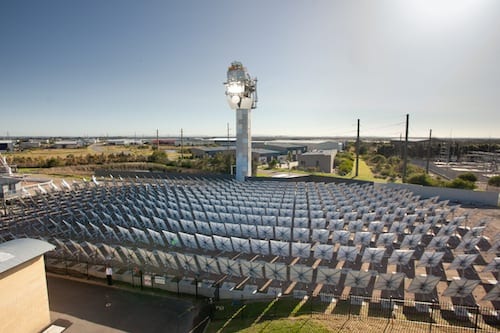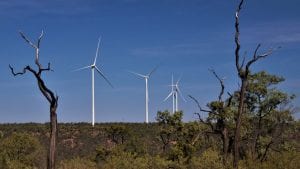Blink and you may have missed it. With much of the coverage of GenCost focusing on the costs of nuclear energy, an important finding may have been overlooked that has the potential to unlock the deployment of a renewable technology that is ideally placed to replace retiring coal plants, such as Eraring, and help make Australia a renewable and manufacturing superpower.
GenCost shows that solar thermal power has the lowest levelised cost of energy (LCOE) of any ‘flexible load, low emission’ technology, that it is cheaper than gas peaking plants, and comparable to coal-fired plants even without a cost on carbon.
Put another way, this is a technology available today with the same characteristics of dispatchability, synchronous generation and system strength benefits as fossil fuel generators but with zero emissions and lower cost of electricity, according to GenCost.
In the solar thermal industry, we’ve known for a while the important role the technology will play in reducing emissions and keeping the lights on at lowest cost.
Policymakers have been paying increasing attention and, with the latest costings, the question of solar thermal should move from ‘is there a role for it?’ to ‘how do we get it into the system?’. The extension of Eraring makes the question even more pressing, highlighting the urgent need for replacement dispatchable capacity.
Concentrating solar thermal power (CSP) systems use mirrors to concentrate sunlight, with the energy captured and stored as heat to be used on-demand or to create steam to drive a turbine and generate electricity.
Unlike intermittent renewables, CSP is fully dispatchable and can store energy to provide typically around 15 additional hours of full operational load, making it ready to deliver at any time, day or night.
CSP is deployed extensively overseas, particularly in regions with similar solar resources to Australia such as southern Europe, the Middle East, and western China. Currently China is most active – it has recognised the importance of the technology to balance PV and wind, and has 23 CSP plants in operation or under construction.
Despite global adoption, CSP is yet to be built at scale in Australia. This is understandable as policy and market settings so far have supported the cheapest renewables irrespective of time of generation or reliability, thus the focus has been on the low hanging fruit of getting more PV and onshore wind into the system.
PV and wind are now universally recognised as providing the cheapest electricity for new build systems, but they are variable in nature and must be firmed by some level of new or existing dispatchable generation.
Modelling by AEMO and others suggests that around 30% of electricity will need to come from dispatchable sources in a future high reliability least cost zero emissions electricity system.
This needs to be some combination of gas fired systems (with CCS), dispatchable renewables like CSP or biomass, and electricity storage systems like pumped hydro and batteries.
Previous work by CSIRO in its Energy Storage Roadmap compared solar thermal with other storage technologies on a ‘’Levelised Cost of Storage’’ basis. On that comparison, solar thermal with integrated storage is very competitive with other alternatives for medium to long duration storage.
Based on these objective numbers, any regulator or developer looking at how they build a low-cost, reliable and resilient energy system must now include CSP in their technology considerations.
What’s more, Australia is uniquely placed to use CSP as a cornerstone of its push to become a renewable energy and green manufacturing superpower. We have some of the best solar resources in the world, and fabrication of CSP systems from readily available materials like glass, steel and concrete components fits well with existing capabilities and regional employment. Companies like Vast are already making CSP components in Australia.
Meanwhile, CSP is the perfect complement to intermittent renewables, providing industry with reliable low-cost zero-emissions heat and electric power 24/7. This is the holy grail of industrial decarbonisation and can be the catalyst for green iron and fuel production, for example.
Indeed, it is hard to envisage the government achieving its Future Made in Australia policy agenda without CSP, and it is good to see they are backing projects like Vast’s 30MW VS1 project in Port Augusta, which is set to be the country’s first utility-scale CSP plant.
With the benefits clear, how do we get CSP built in Australia? The Capacity Investment Scheme could be the key mechanism for attracting CSP into Australia’s energy system but it must be designed in such a way that it preferentially rewards projects based on dispatchable capacity of 8 hours or more, or there must be specific tenders for truly long-duration technologies.
As policymakers scramble to keep the energy transition on track, and with Eraring’s extension highlighting a glaring gap in renewable dispatchable capacity, GenCost’s findings make CSP impossible to ignore.
Dr Keith Lovegrove, Víctor Marín and Craig Wood are directors at Austela, the Australian Solar Thermal Energy Association







